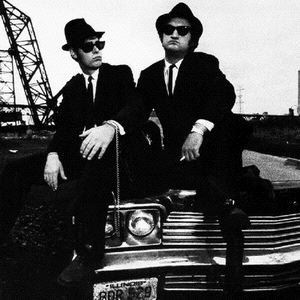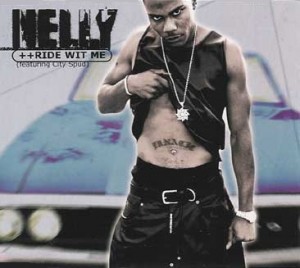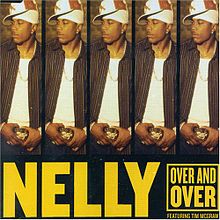“We got both kinds. We got country and western” (The Blue Brothers). A classic line from a classic movie. The joke of course is that country and western are almost one genre. If not almost one genre, they just flat out are one. The movie from which this quote comes was made in 1980, a long time ago for popular culture. By the time of the movie The Blues Brothers, country and western music had fully transformed from separate, regional entities into one conglomerate. Who is to blame for this merger? Hollywood of course. Producers wanted to promote the dying image of a cowboy using music that sounded to them close enough, so they combined musical styles from the western US with Appalachian styles in the “singing-cowboy” genre. Country-western was born. But enough already about the glory of the olden times, of actors who are long dead or significantly overweight. (Yes, that was the fate of the Blues Brothers.) Those times are long gone. The eighties are over. Before leaving the olden days, however, one question remains? Could a similar event happen again? The world is a different place now. Hollywood’s cowboys of the silver screen endured a mass extinction around the year 2000, and even their deaths were well after their heydays. The southwest is now, one would at least hope, no longer an empty patch of desert administered by the mafia. The question still remains: can history repeat itself? Will the events that befell the regional styles of country and western music happen again? Will two different styles come together to form a conglomerate genre? The responses to these questions would have to account for modern twists.

First for a brief history of country music. Country music originated in Tennessee in the 1920s. Over the years it merged with other sounds including western and rock to form a new style called country but with original country having a minority influence, much like how United and Continental Airlines merged to form a new entity called United even though Continental management retained a controlling stake. After starting to come closer to pop in the 1980s, country became a sensation in the 1990s before leaving the Appalachian mountains in the early 2000s. Country began to make its way to big producers on the West Coast. This merge allowed country stars to transition to pop stars. Think Miley Cyrus and Taylor Swift. Cyrus even acknowledge it herself with her single “Party in the USA,” claiming that her life in Los Angeles was “definitely not a Nashville party.” She was right, and country music as a packaged industry was born.
Now to change styles and discuss what many people consider to be one of the most sophisticated and artsy forms of music: rap. Rap as a movement began in the 1980s as a style created mostly by artists trying to be different or independent. Even well into the 1990s, rap producers were generally regional and outside of mainstream music production. Rap and its creation were off the grid. Rap was a style that could not be emulated by Hollywood, by big companies. Many rappers were furious when the first major executives began working with rap. O’Shea Jackson, commonly known by his stage name Ice Cube, wrote “No Vaseline,” a song deploring rappers who worked with large production companies. By the end of the decade, however, rap began to undergo major changes. The 2000s ushered in an era of rap produced by large recording studios offering lucrative contracts. Unlike country music, rap did not move far physically, but socially it changed enormously. Rap as an industry was born.
At this point it is time to zone in on one artist. One from a place that is not the birthplace of either country or rap. One from the metropolis of St. Louis, Missouri, home of the famous St. Louis Arch. Cornell Haynes, or Nelly, began his career as a musician around the turn of the millennium. His debut album Country Grammar included the song “Ride Wit Me,” which was later released as a single. “Ride Wit Me” is a little bit more laid back sounding than most rap songs before it. There is less anger, less anxiety, less haste. It still has a noticeable beat and a definite rhyme scheme, but the hard edge is gone. The slow guitar in the back, it almost sounds like… country. Somehow rap and country music wove themselves together. Unlike country-western, country-rap is not considered to be one genre, but country and rap can, as demonstrated by Nelly, come together. Somehow, in this song by this artist, country and rap became the same.
Looking back at the histories of country and rap, the timing makes sense. Both styles became mainstream around the same time. Close to the year 2000, country and rap moved from the status of local style to that of global, mass-marketed phenomenon. With similar timing come similar environments and similar people. Executives saw both genres at the same time and were willing to combine them. The blur of the line between country and rap happened the instant someone with money, power, and the willingness to mass-produce became involved.

Mass-production caused the merger. Mass-production created the sameness. Mass-production is by its very nature hegemony. The concept of mass-production is that everything will be the same. All items that come off the assembly line will be identical. This concept works on two levels. First all copies of a single type of object will be the same. All iPads, all ethernet cables are exactly the same. Second, everything is made in a factory, either metaphorical in the case of music or literal in the case of objects, which means everything is created using the same methods of production. Items created using the same methods of production tend to be similar. A motorcycle and a car have similar types of engines because they both use the type of engine that is best mass-produced. The company Achates Power recently tried to fundamentally change the design of the car engine because it would have been more fuel efficient and less likely to break. The idea never caught on because the new engine design was non-trivially harder to produce cheaply in a factory. Music functions the same way. The type of music needs to be able to be created on a mass scale. Because the methods of production of country and rap music became the same, the styles did as well.
In combining country and rap, Nelly may have been a visionary. He took two styles and out of them created one the world had never before heard. The merge of country and rap was an invention, it was an epiphany. “Ride Wit Me” added to cultural growth in making a new form of music, one that included elements from geographically and socially diverse areas. The combination of country and rap was ingenious. It required creativity to be able to blend both style in a way that sounded cohesive and appealing. “Ride Wit Me” was a work of genius. A new style and a new sound are not everyday occurrences, and the harbinger of this new genre truly encapsulated the ability of new culture to be born.
Except that “Ride Wit Me” may not have been the new culture it was promised to be. The merge of country and rap did not take genius or creativity. The major producers can turn anything into a new style in their sleep. If their own talents fail, producers have computer programs to determine for them which new styles to create and explore. Skill and talent are not involved in the creation of a new genre such as country rap. The two styles are not from geographically diverse areas. Nelly’s music was not a combination of Compton and Tennessee, it was a combination of mass-market production and other mass-market production. Two sounds can combine by being played at the same speed at the same time. “Ride Wit Me” is an example not of a new style but of one that was destined to be created from the day that rap and country both became nationally marketed commodities. New culture was not born. Culture shrank. Two formerly separate, local entities merged into a nationally-marketed conglomerate, reducing cultural and musical variety. What had formerly been two became one as samess took hold.
What happened to country and rap music with the rise of Nelly and his single “Ride Wit Me” leads to one basic conclusion. When culture is mass produced, all art is in danger of becoming the same. Rap and country music became commodities and therefore became the same as each other. The mass-marketers are smart; they know what sell and what does not. They know how to make a product people are willing to buy. They know what is required for their products to be successful. Most importantly they know that if something works, repeat it. Fit what you are given into a certain form and reproduce that form “over and over again.” (Pun alert!) After hearing “Ride Wit Me” and the rest of Country Grammar, producers decided to have Nelly collaborate with country singer Tim McGraw on “Over and Over Again.” Producers and marketers use this approach for all kinds of culture from songs to visual art to fiction novels to movies. Mass produced culture becomes an identical mush devoid of any differences.
Mass culture produces sameness. That sentence sums up what happened to Nelly and so many other artists whose work became mass-produced. Even though, new developments can sometimes crop up on the fringes of society. Most dissipate quickly, but some, such as rap, gain a following. They grow and grow until the culture giants take them and transform them into mass-marketed commodities. This pattern almost feels like a chase. New developments attempting to outrun industrialized culture producers. As shown by The Blues Brothers, the chase, while a long process, can be destructive and often end up bringing about the end of an era for the people even tangentially involved.